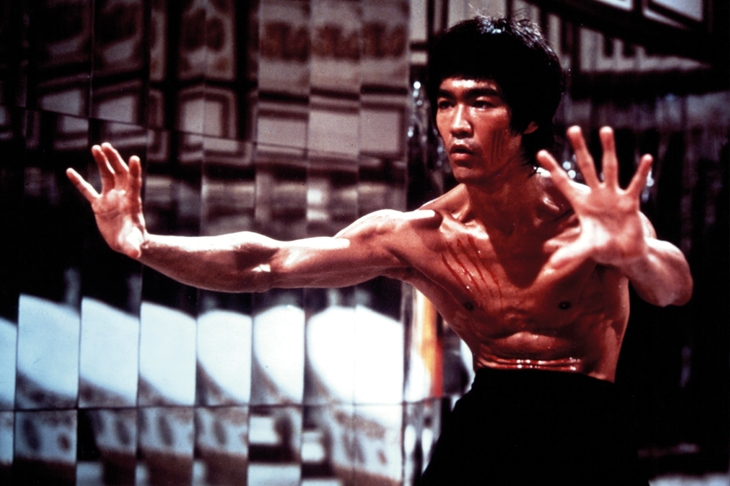Every cinema-loving person has a favourite Bruce Lee moment. My own comes towards the end of Enter the Dragon, the film which Lee made just before his death in 1973 at the age of 32, and that would in turn seal his worldwide stardom. There, on one side, stands Lee himself. There, on the other, is the villainous Han, who has a set of metal talons where one of his hands ought to be. The two men leap across each other, leaving Lee with an unpleasant gash on his shirtless torso. He pauses, dabs a finger in the blood, raises it to his mouth — and licks. It is weird, gruesome and oh-so-cool, all at once.
Why did Lee do this? The answer is in Matthew Polly’s biography. One of Lee’s disciples had performed exactly the same move during a bar-room scrap and, unsurprisingly, found that his opponents were rather unnerved by it. As Polly writes: ‘Bruce loved the story and adopted it into his repertoire.’
Indeed, almost all answers can be found in Polly’s book. It’s a weird feature of Bruce Lee studies that, since his death, so much of the literature has been written by people who knew him, and so little has been written in the spirit of proper biographical investigation. Polly corrects that. He has devoted six years to researching his subject, but there were many additional years of effort before that. In his twenties, Polly left Princeton to develop his kung fu skills at the Shaolin Temple in China, and wrote a very funny book, American Shaolin, about the experience. He approaches Lee as a fan, but also as a scholar.
The scholar has a lot to unpick. Despite the pop simplicity of Lee’s image, emblazoned across a million posters and T-shirts, there is almost nothing about the man that is easy to summarise.








Comments
Join the debate for just £1 a month
Be part of the conversation with other Spectator readers by getting your first three months for £3.
UNLOCK ACCESS Just £1 a monthAlready a subscriber? Log in